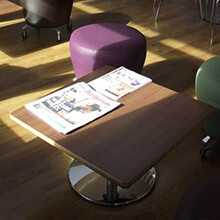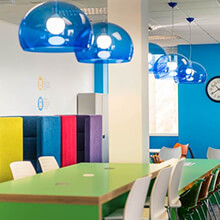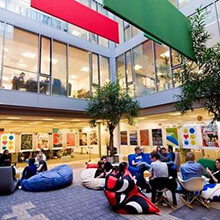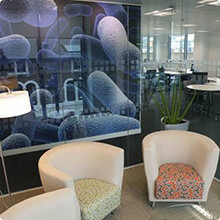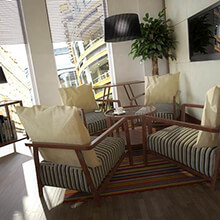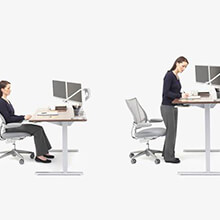- Contact 0870 350 7767
- |
- Advertise
Intelligent office design & fit-out can help facilities managers harness change
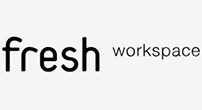 News and PR from Fresh Workspace Ltd - Published 27 April 2017
The workplace revolution we foresaw twenty odd years ago was supposed to have eradicated some of the oldest challenges known to facilities managers.
News and PR from Fresh Workspace Ltd - Published 27 April 2017
The workplace revolution we foresaw twenty odd years ago was supposed to have eradicated some of the oldest challenges known to facilities managers. An office fit-out that makes the workplace too static can hamstring an organisation. What is needed instead is an intelligent office design solution that builds flexibility into the building. Contemporary workplace design principles and furniture can be especially helpful. If we take an idealised view of the modern office as a flexible focal point for a technologically literate, mobile workforce of self-motivated knowledge workers, its form must reflect that function.
The buildings floorplates must be capable of accommodating a wide range of space planning models, and servicing must be appropriate both in terms of technology and in terms of having the right spaces for the right jobs.
At an interior design level, most talk of flexibility in the past has centred around the need to reconfigure office furniture. The past few years have seen the best contemporary office furniture systems respond by becoming more adaptable. Other elements of the office interior that were once considered static or semi-static are also having to offer more flexibility, including lighting, storage and partitioning. Interior elements are now routinely expected to define space, portray corporate identity, comply with legislation and act as signage.
This demands a holistic solution that can only be provided by using intelligent office interior design and fit-out to resolve the interactions between architecture, culture, technology, teams and individuals. Space planning will integrate flexibility into every level of the building to meet the needs of firms who have the task of dealing with a level of complexity that was completely unheard of only a few years ago. The need to manage change is always with us so we should always be one step ahead of it.
Other announcements from Fresh Workspace Ltd
-
The wellness agenda has evolved into a core pillar of real estate strategy.
Changing workplace strategies confirm importance of wellness, technology and productivity.
16 Apr 2018
-
Wellbeing and productivity of employees.
Environmentally friendly buildings help you to sleep better and work more productively.
19 Feb 2018
-
Shedding some daylight on one of the most important aspects of office design
One of the most underappreciated and least talked about aspects of a productive workplace design is not only completely free, we enjoy a limitless supply of it.
17 Jan 2018
-
Modern facilities management thinking views offices as a strategic asset.
For most organisations the total operating cost of their property runs at between 10 and 20 per cent of their annual operating costs. By any measure, that is a significant proportion of expenditure.
16 Oct 2017
-
A feeling of togetherness is essential, so why would we kill off the office?
It is still depressingly commonplace to read proclamations of the death of the office.
05 Oct 2017
-
How to decide on the best type of office fit out for you
It is essential to choose a specialist office fit out company that can deliver a wide range of office design and fit out solutions including Category A and B design and build solutions.
04 Oct 2017
-
Workplace design reflects our changing relationship with work and society
Of all the things we buy with the exception of our clothes, furniture is the most intimate, the one we spend most time in contact with.
23 Aug 2017
-
Successful flexible working is built on the foundations of great office design
In May, the Wall Street Journal reported IBM had announced it was obliging a significant number of its staff to give up on remote working and move back to corporate offices, many of them regional hubs
27 Jul 2017
-
Good ergonomics is about moving and standing as well as sitting
Although the idea has been around for a long time, workplace ergonomics first came to prominence in the wake of the intensive growth in the use of computers.
29 Jun 2017





